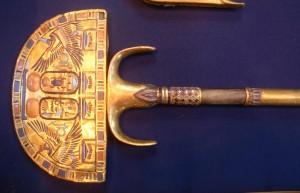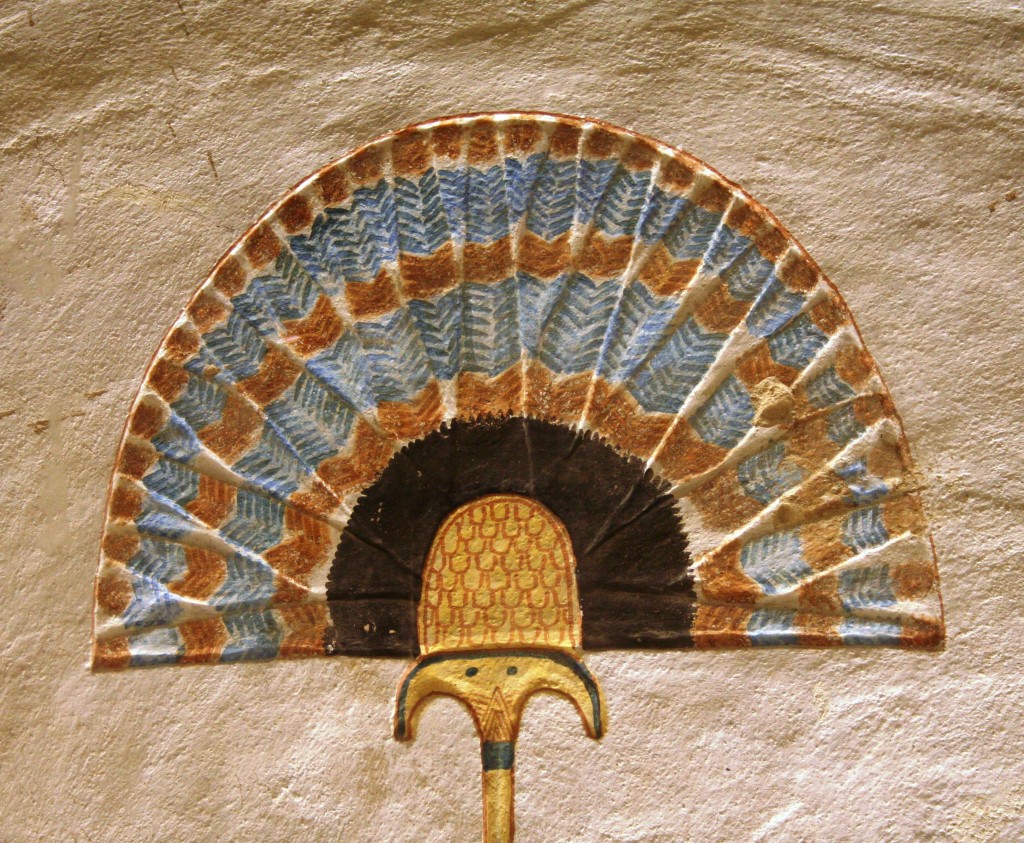Tomb of Khaemwaset (QV 44)
NOTE: The sunshade, unlike the khu fan, appeared early in Egypt’s history. They appear on both the Narmer macehead and that of King ‘Scorpion’ (Oxford, Ashmolean Museum E 3631 and 3632). This emblem is generally seen as signifying a divine presence, whether it appears behind a cult image, divine bark, or the body of the king. Although it certainly fulfilled a practical purpose, in shielding the king from the sun and providing a cooling breeze, the sunshade appearing behind the ruler has been interpreted as indicating that the pharaoh was endowed with the characteristics of a god. The sunshade carried behind the king, called the behet, could be viewed as a public declaration of a divine presence, and thus the fan itself became “the physical manifestation of the abstract shade”(Bell (1985), 34). Additionally, this emblem may have symbolically shielded onlookers from the divine brilliance of the living pharaoh when he appeared. For more on this emblem, see G. Graham, “Insignias” in Redford (ed.), .), The Oxford Encyclopedia of Ancient Egypt I (2001), 166 and L. Bell, “Aspects of the Cult of the Deified Tutankhamun,” Mélanges Gamal Eddin Mokhtar I, (IFAO, 1985), 33-34, where he points out two textual references that specifically discuss the ‘shade’ of a god resting on the ruler.






The details of the feathers on those are striking! Representations of the real thing? Symbolic as well (celestial sphere, falcon)? Resting in the shadow of the god was certainly something special. Thutmosis IV was in the divine shade before napping and being visited by the god in a dream, as was Jpuy, before having his divine vision of Hathor! Even today we talk about an umbrella of protection (or is that just insurance ads…)… just random ramblings!
They are wonderful, aren’t they? I love the blue and red pattern–wonder if they were dyed in reality. Being in the shade of a god was obviously THE place to be 🙂 What a great note about the umbrella! Does make you wonder…